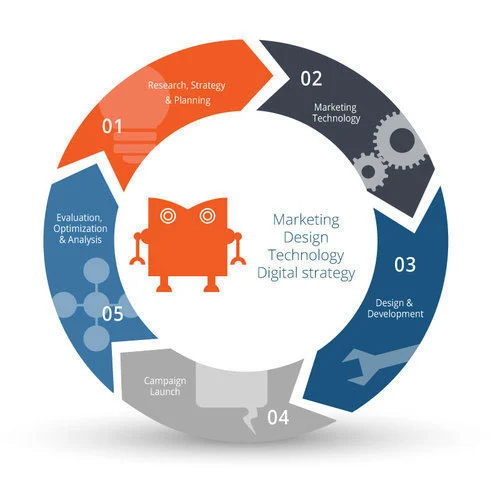Strategy and Planning in Digital Marketing:
A Comprehensive Guide

The digital landscape is continuously evolving, and businesses must adapt to stay competitive. A well-crafted digital marketing strategy is crucial to reach your target audience, increase brand visibility, and drive conversions. In this article, we’ll explore the importance of strategy and planning in digital marketing, and provide a step-by-step guide to help you create an effective plan for success.

The Importance of Strategy and Planning in Digital Marketing
A digital marketing strategy serves as a roadmap for your online efforts, ensuring that your marketing activities align with your overall business objectives. A robust digital marketing plan enables you to:
- Define clear goals and objectives
- Allocate resources efficiently
- Identify the most effective marketing channels
- Measure and track the success of your efforts
- Adjust and refine your marketing tactics
Without a strategic plan, you risk wasting time and resources on activities that may not contribute to your desired outcomes. A well-executed strategy helps you maximize your return on investment (ROI) and achieve sustainable growth.
A Step-by-Step Guide to Digital Marketing Strategy and Planning
1. Define Your Objectives and Key Performance Indicators (KPIs)
Start by establishing your digital marketing objectives, which should align with your overall business goals. Common objectives include increasing brand awareness, driving website traffic, generating leads, and boosting sales. Once you’ve set your objectives, identify the KPIs that will help you measure your progress. Examples of KPIs include website visits, social media engagement, or conversion rates.
2. Analyze Your Target Market
Understanding your target market is crucial for creating relevant and effective marketing campaigns. Conduct market research to gather insights on your audience’s demographics, preferences, and online behavior. This information will help you tailor your marketing messages and select the right channels to reach your audience.
3. Evaluate Your Current Digital Presence
Before you can plan your future marketing activities, you need to assess your current digital presence. This includes analyzing your website, social media profiles, email marketing campaigns, and any other online assets. Identify areas of strength, as well as areas that need improvement. This evaluation will provide a foundation for your digital marketing strategy.
4. Identify Your Digital Marketing Channels
There are numerous digital marketing channels available, each with its unique strengths and weaknesses. Based on your target audience and objectives, select the most appropriate channels for your strategy. Common channels include:
- Search engine optimization (SEO)
- Pay-per-click advertising (PPC)
- Social media marketing
- Content marketing
- Email marketing
- Influencer marketing
5. Develop a Content Strategy
Content is the cornerstone of digital marketing, as it drives engagement and conversions. Develop a content strategy that outlines the types of content you’ll create, the channels you’ll use to distribute it, and the frequency of publication. Ensure that your content is high-quality, engaging, and relevant to your audience.
6. Allocate Your Budget and Resources
Determine the budget and resources needed to execute your digital marketing strategy. This includes allocating funds for paid advertising, software tools, and content creation, as well as assigning responsibilities to team members. A well-defined budget will help you prioritize your efforts and make informed decisions.
7. Create an Implementation Timeline
Develop a timeline for implementing your digital marketing strategy, taking into account your objectives, resources, and deadlines. This timeline should include milestones and key dates for each marketing activity. A well-structured timeline will help you stay organized and ensure that your marketing efforts progress as planned.
8. Measure and Analyze Your Results
Tracking the success of your digital marketing efforts is essential for refining your strategy and maximizing your ROI. Use analytics tools to monitor your KPIs and gather insights on your campaigns’ performance. Regularly analyze this data to identify trends, opportunities for improvement, and areas that need adjustment.
9. Adjust and Refine Your Strategy
Digital marketing is an iterative process that requires constant monitoring and adjustment. Based on your analytics data, refine your strategy to improve your results. This may involve tweaking your messaging, targeting, or channel selection. Stay agile and responsive to change, as the digital landscape is always evolving.
Conclusion
Effective strategy and planning are essential for success in digital marketing. By following the steps outlined in this guide, you can create a robust digital marketing strategy that aligns with your business goals, engages your target audience, and drives results. Remember to stay adaptable, continuously learn from your data, and refine your strategy for long-term success in the digital marketplace.
Discover a dependable group of digital marketing professionals. We foster trust daily through open communication, clear transparency, and proven outcomes.